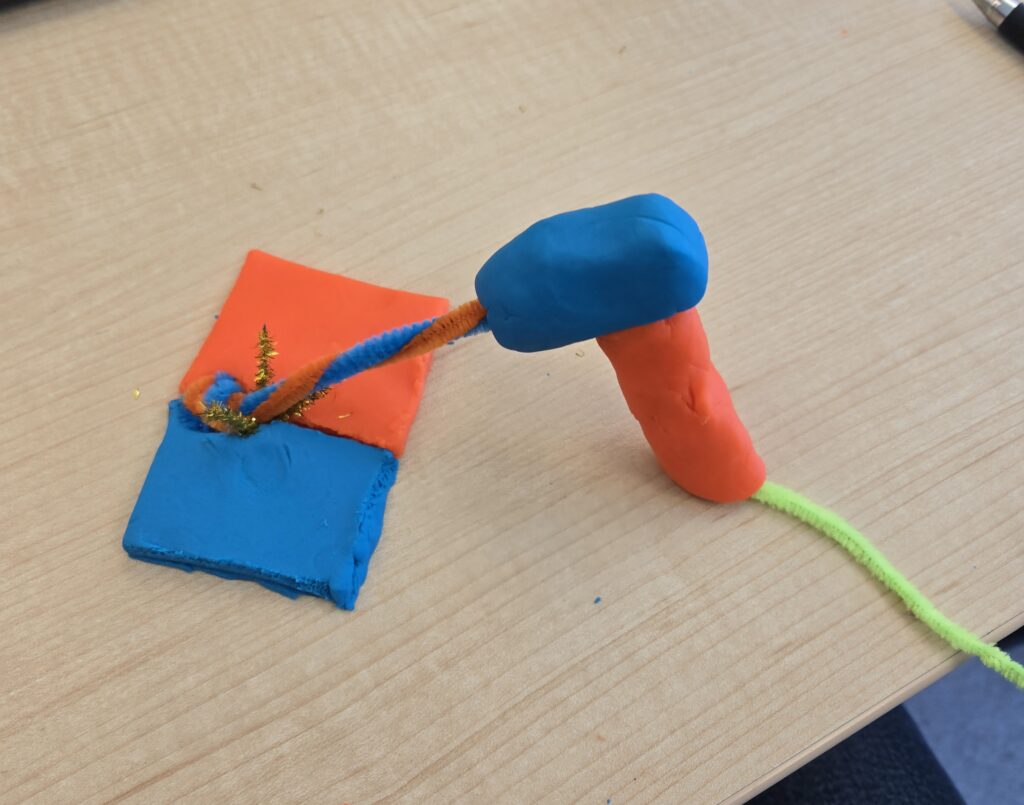Teaching Philosophy Sculpture

I created a stick welder handle welding two plates together. I wanted the two plates to be different colors to represent different things. Blue represents the students, and orange represents skills and knowledge. The electrode was made of both blue and orange to show how students can become one with skills and knowledge. I represented the electrode holder and the weld bead as blue and orange also to be the bridge that brings the two plates together. To me, this means that I am the welder, bringing skills and knowledge to my students. I always strive to better my students with the development of their trades proficiency in class. I find with my guiding hands, students become more independent, safe, and their self-esteem grows. The most rewarding parts of my practicums have been to see the students build on the knowledge and skills they learn each and every day. To myself, this sculpture represents my philosophy of developing students with into great trades workers or developing their appreciation to those who work with their hands. It also represents how all learning can be obtained with the right teacher, mentor, or guide in life.
Philosophy Statement
I believe education should help students become confident in themselves and ready for life after school. It’s not just about hitting academic goals—it’s about helping students realize they can take on challenges and work toward whatever they set their minds to. In trades and tech, I see learning as something that happens through doing, trying, and figuring things out. I want students to leave my classroom with real skills and the belief that they’re capable of doing something meaningful with them.
My approach to teaching is pretty straightforward: learning should be student-driven, hands-on, and flexible. In my shop, there’s no such thing as a mistake—just practice. My role is to be a guide and support system. I’m here to pass on skills, encourage curiosity, and give students room to grow. They’re the ones doing the discovering, and I’m just helping steer them in the right direction when needed.
This way of thinking lines up with something John Dewey once said: “Education is not preparation for life; education is life itself.” That hits home for me, especially in trades. Students learn best when they’re actually doing the work—building, problem-solving, figuring things out through experience. That’s real learning.
I see the student’s role as figuring out what they like, what they’re good at, and being willing to try new things—even if it’s uncomfortable at first. Pushing their boundaries is how they grow, and I want my classroom to be a space where they feel safe enough to do that.
I look at curriculum as more of a guideline than a hard rule. It tells us what the basics are, but I’m always encouraging students to go beyond that if they’re interested. When a student pushes further, I know I’ve done my job. As for assessment, I focus mainly on effort and growth. If students are trying, learning from their experiences, and improving, they’re doing well. I’m also a big believer in student self-assessment. Most of the time, students are harder on themselves than I would be, and it gives them ownership over their progress and goals.
The biggest value I bring to my classroom is that every student matters. Whether they’re an A+ academic or a student with special learning needs, I treat them all with the same respect and support. Trades aren’t just for kids who “aren’t academic”—they’re real, rewarding careers that should be seen with pride. I want students to know there’s dignity and opportunity in this work, even if it’s not always promoted in today’s world. At the end of the day, I want students to feel like they belong, like they’re capable, and like they’ve got a path forward—whatever that looks like for them.